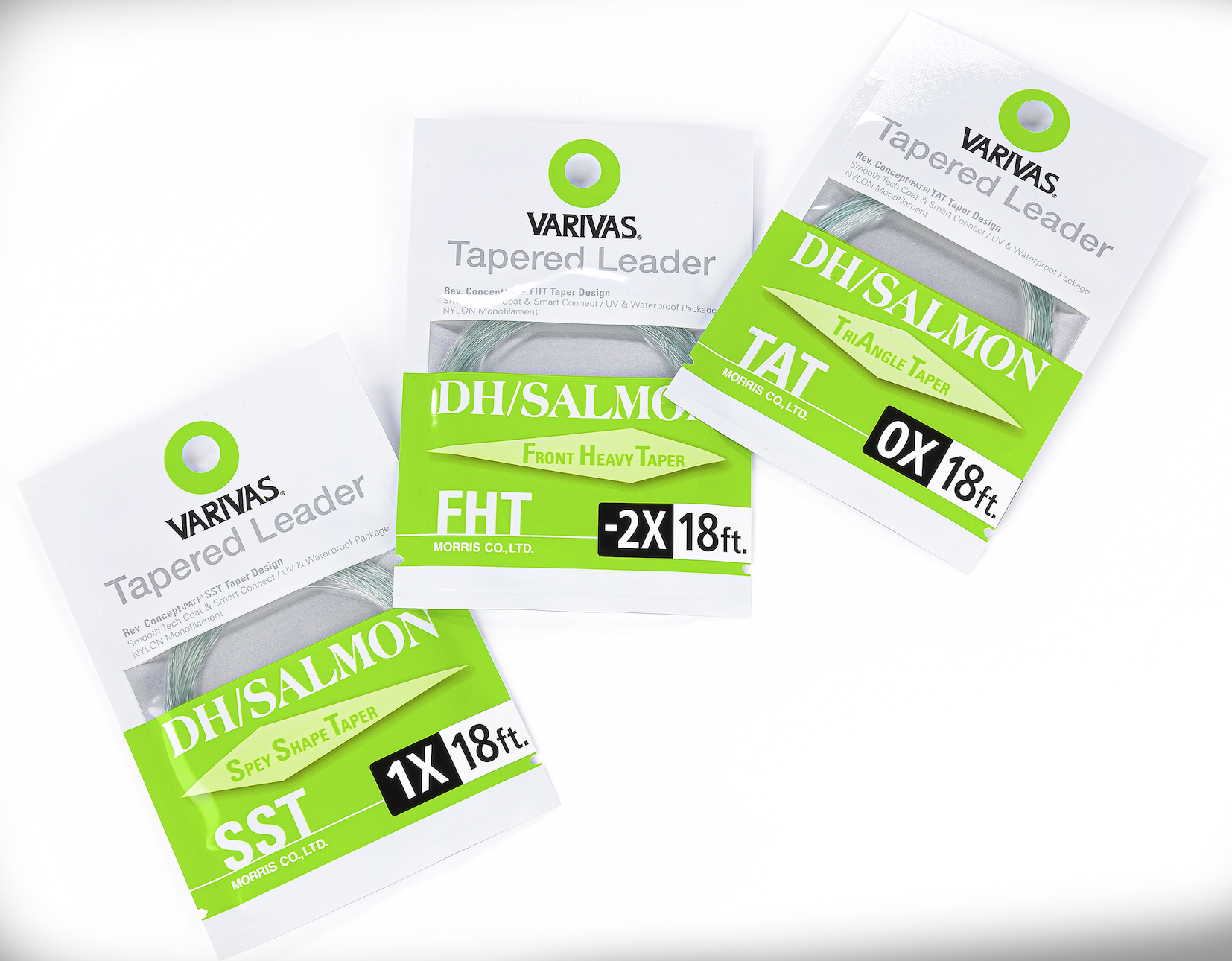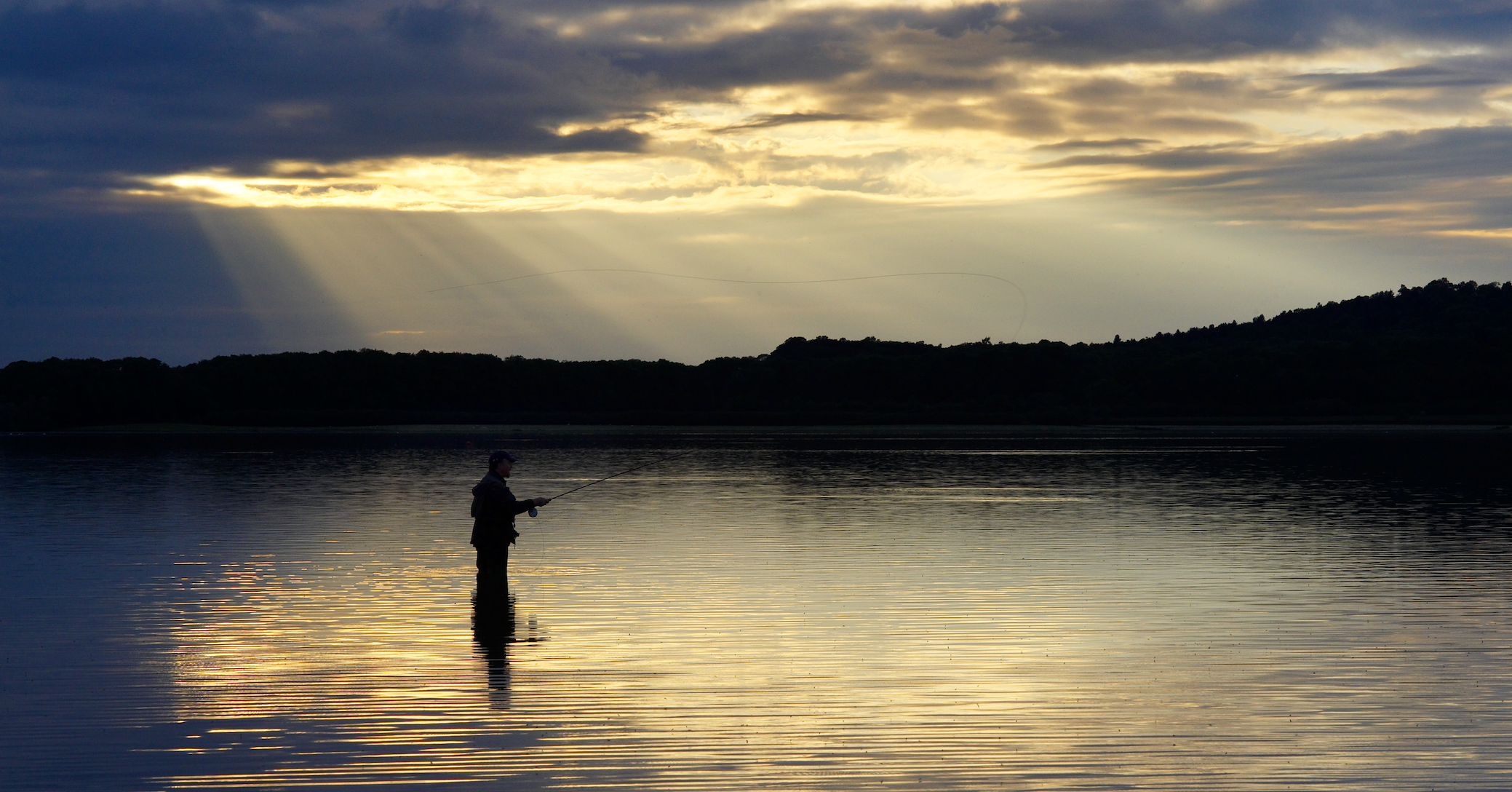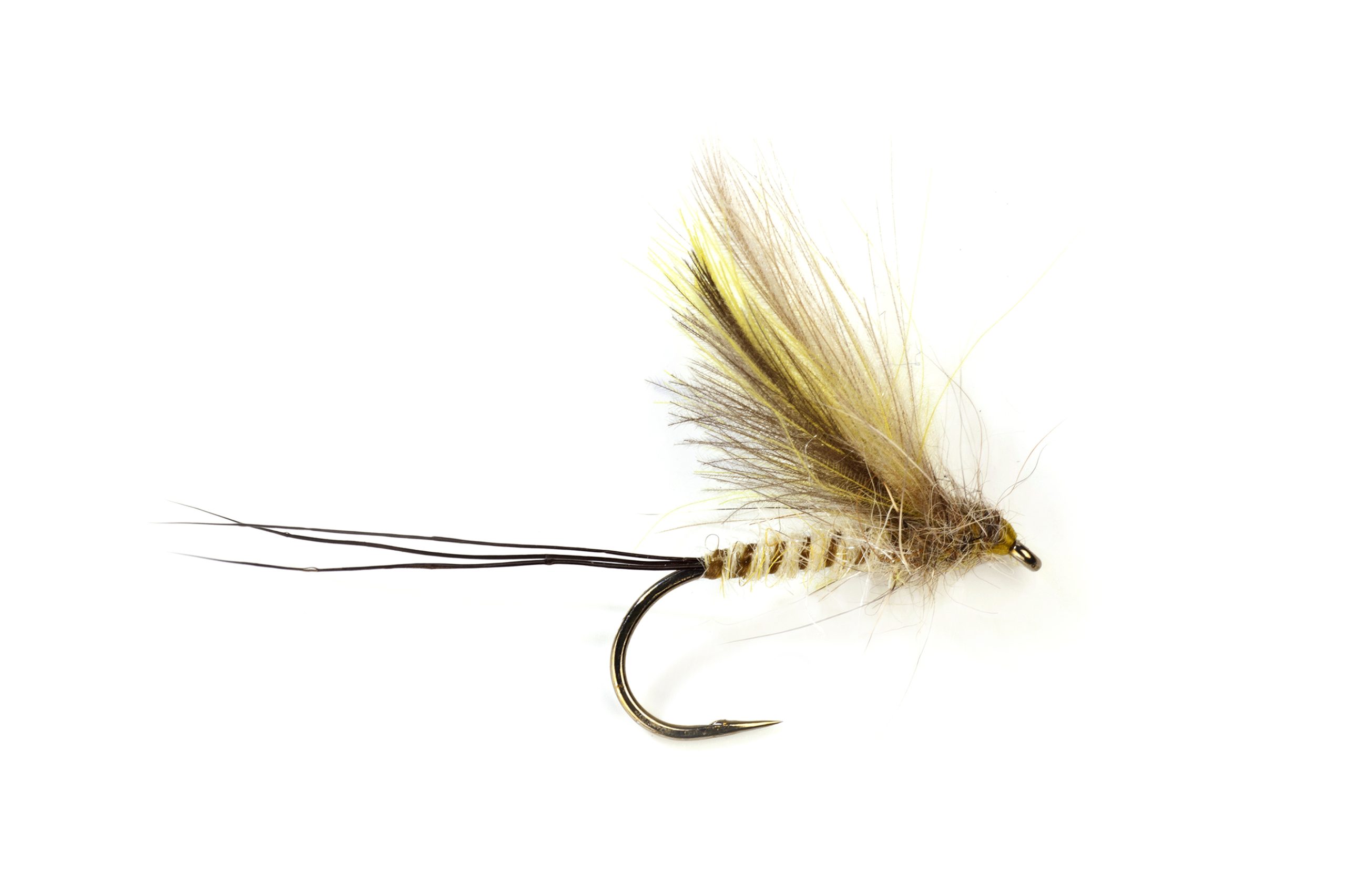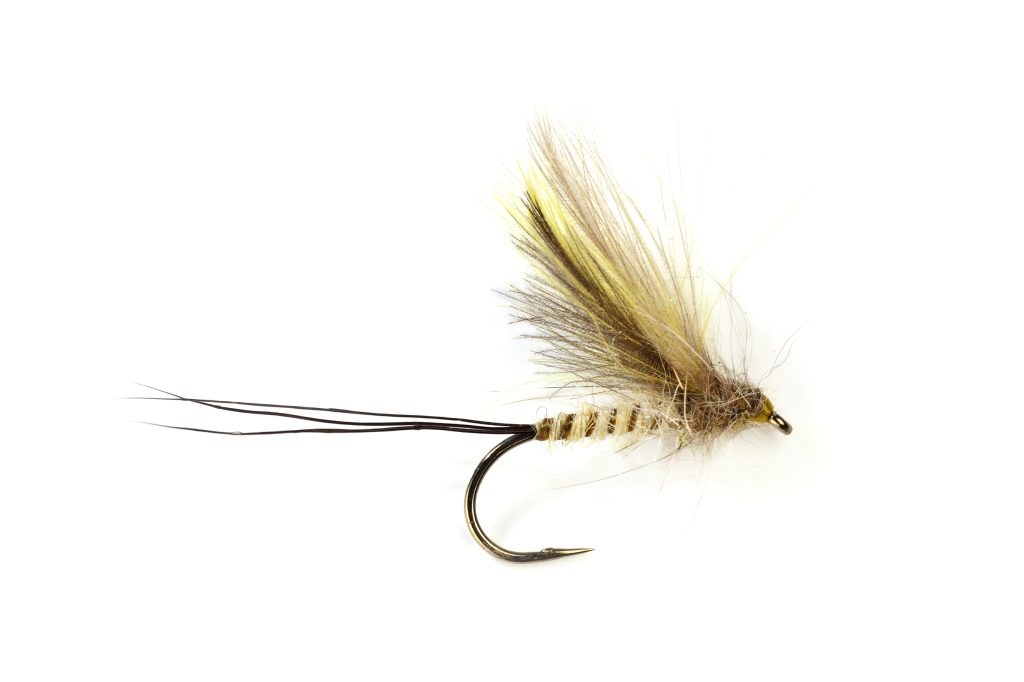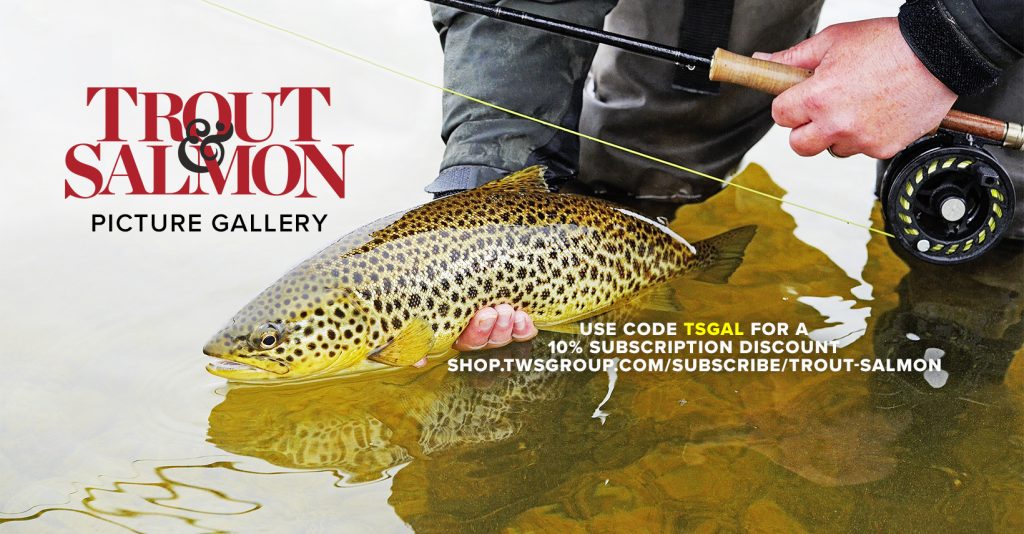Fly tying
News
HOW TO TIE THE RED-RIBBED CORMY
Would you like to appear on our site? We offer sponsored articles and advertising to put you in front of our readers. Find out more.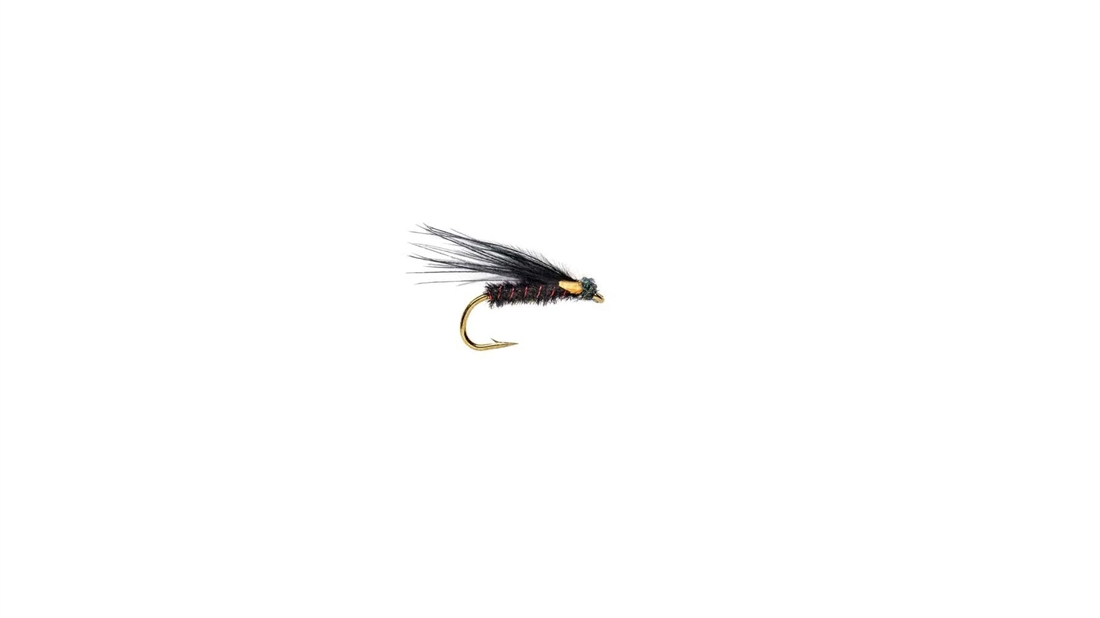
Continuing the theme of adding components to the basic Cormorant template, the Red-ribbed Cormy is one that’s worked well over the years.
A size 10 heavyweight wet fly hook is ideal for this type of Cormorant. It suits the length of the fly while containing enough metal to make the fly sink reasonably quickly without adding any extra weight.
While materials such as stripped quill and coloured tinsels are very effective, you may wish to stick with peacock herl. You can either use plain peacock herl or one of the dyed colours – black and claret give the body a nice depth of colour. Peacock herl’s natural iridescence makes it a great material for tying nymphs and the like – unfortunately it’s also quite fragile. For this reason, adding a rib makes sense. This can be clear nylon monofilament or tying thread if you only want the herl to show. Alternatively, a coloured wire adds an extra something.
Hook: Size 10-12 wet-fly
Thread: Black 8/0
Rib: Red wire
Body: Natural or dyed black peacock herl
Wing: Dyed black marabou
Cheeks: Sunburst yellow goose biots
Head: Black Glister or Peacock Lite-Brite (optional)
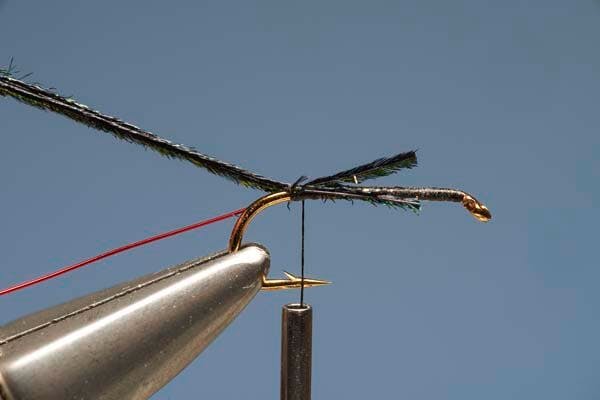
- Fix hook in vice and run tying thread to bend. At the bend catch in a length of red wire plus one or two strands of black peacock herl.
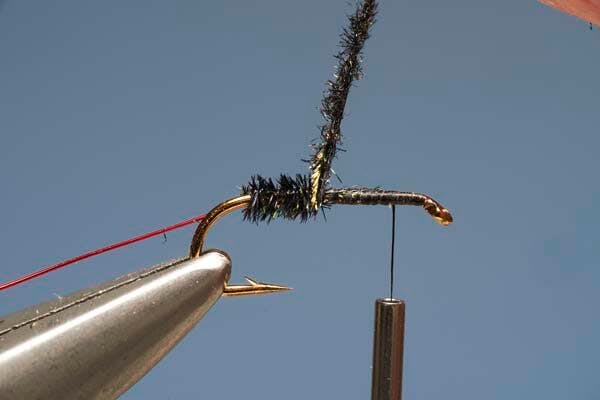
- Wind thread back up shank, covering waste ends of wire/peacock herl. Twist herls slightly then wind along shank in touching turns.
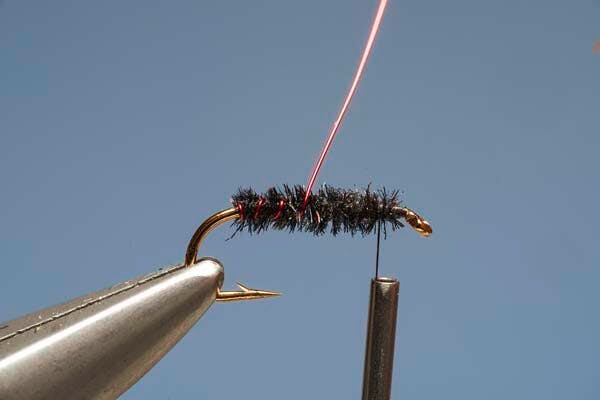
- When the peacock herl has reached almost to the eye secure loose ends and remove waste. Wind wire along the body.
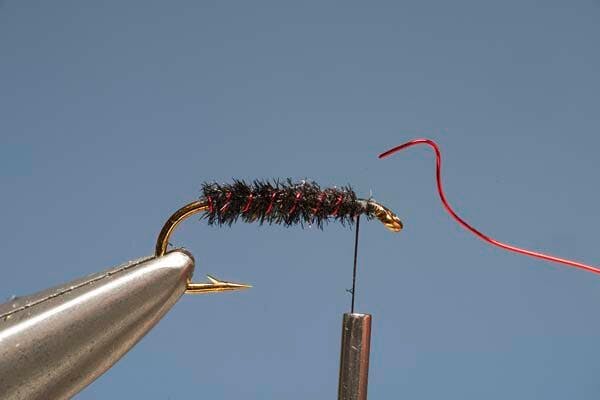
- The wire turns should be open and evenly spaced. Once the wire has reached the end of the body secure and remove waste end.
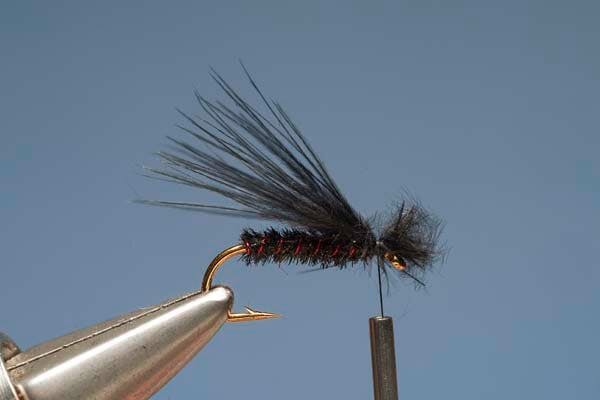
- Take a few slim marabou fibres and offer them up to the hook so that their tips project a short distance past the bend.
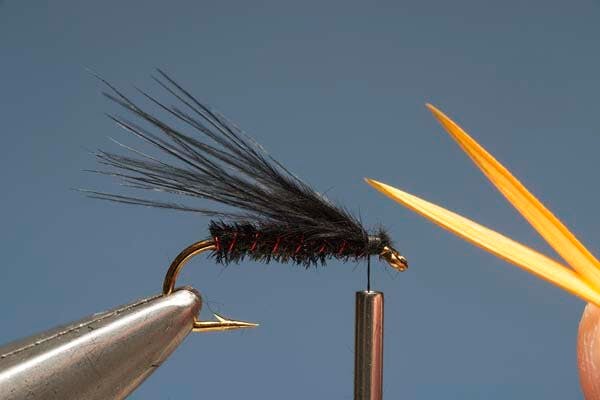
- Secure marabou wing in place with further thread turns and trim waste clear of the eye. Select two goose biots dyed sunburst yellow.
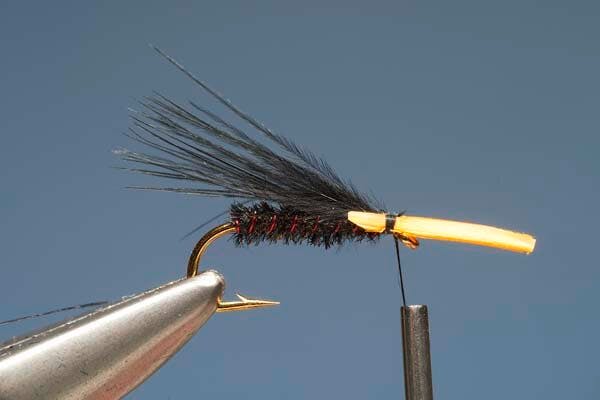
- Trim the ends of the biots at an angle to simulate wing buds, then catch them in either side of the wing to form the cheeks.
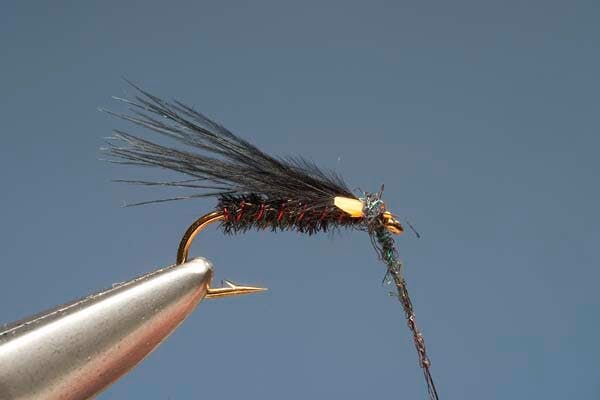
- Fold waste ends of goose biots back from the eye then trim them off. Take a small pinch of Black Glister and dub it onto the thread.
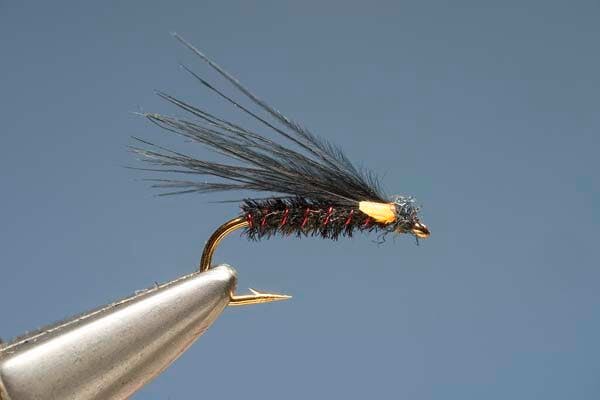
- Apply a couple of turns of the dubbing to create a small but distinct head. Finally, cast off the tying thread with a secure whip finish.
Related articles
Fly tying
Tie the CDC Mayfly Dun
Try this low-riding Mayfly Dun for fussy trout that refuse a high-riding dry-fly.
By Time Well Spent
Manage Consent
To provide the best experiences, we use technologies like cookies to store and/or access device information. Consenting to these technologies will allow us to process data such as browsing behavior or unique IDs on this site. Not consenting or withdrawing consent, may adversely affect certain features and functions.
Functional Always active
The technical storage or access is strictly necessary for the legitimate purpose of enabling the use of a specific service explicitly requested by the subscriber or user, or for the sole purpose of carrying out the transmission of a communication over an electronic communications network.
Preferences
The technical storage or access is necessary for the legitimate purpose of storing preferences that are not requested by the subscriber or user.
Statistics
The technical storage or access that is used exclusively for statistical purposes.
The technical storage or access that is used exclusively for anonymous statistical purposes. Without a subpoena, voluntary compliance on the part of your Internet Service Provider, or additional records from a third party, information stored or retrieved for this purpose alone cannot usually be used to identify you.
Marketing
The technical storage or access is required to create user profiles to send advertising, or to track the user on a website or across several websites for similar marketing purposes.

